Latest News
Kitchen Chat and more…
Kitchen Chat and more…
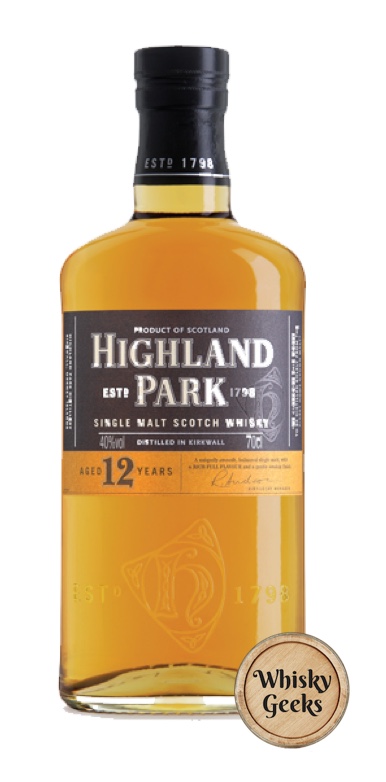
Highland Park needs no introduction. It is a popular brand globally and has won the hearts of many whisky lovers with their variety of whisky. For many years, the Highland Park 12 Years Old has delighted the nose and palate of many with its perfect harmony of aromatic smoky peat, sweet heather honey and rich fruit cake.
Colour: Light Amber
ABV: 40%
Nose: The first sniff brings you heather-honey sweetness and smoky peat. The perfect mix of sweetness and smoke builds up an anticipation for the palate, inviting you to take a sip to wet the lips. As the nose opens up, orange squash and spiced yellow raisins come into the picture to build up the heather-honeyed peat, giving it more complexity. Hay and hints of nutmeg and cardamom come last to create a complete nose. (16/20)
Palate: A sip of this gold nectar brings a well-balanced smoky sweetness that delivers the full promise from the nose. Burnt grass with orange squash hits the palate before maltiness comes rushing in. Hints of honeyed raisins come after to round off the palate with the complexity from the nose. This is definitely good stuff from an ABV of 40%. (16/20)
Finish: The finish is medium long, which is interesting considering the low ABV. The lingering sweet and malty smokiness add to the appeal of this expression. (16/20)
Body: Highland Park 12 Years Old is a well-balanced expression with a good mix of sweet and smoke. Definitely a delicious dram and an easy drink. (30/40)
Total Score: 78/100
Comments:
Geek Spice: The 12 Years Old is an easy drink which can be taken as an after-dinner drink. The lower ABV also adds to its appeal as an after-dinner drink.

Picture Credits: www.highlandparkwhisky.com
Highland Park Distillery is located in Kirkwall, Orkney. Known as the most northern whisky distillery in Scotland, its history is shrouded in mystery as to who the actual founder was.
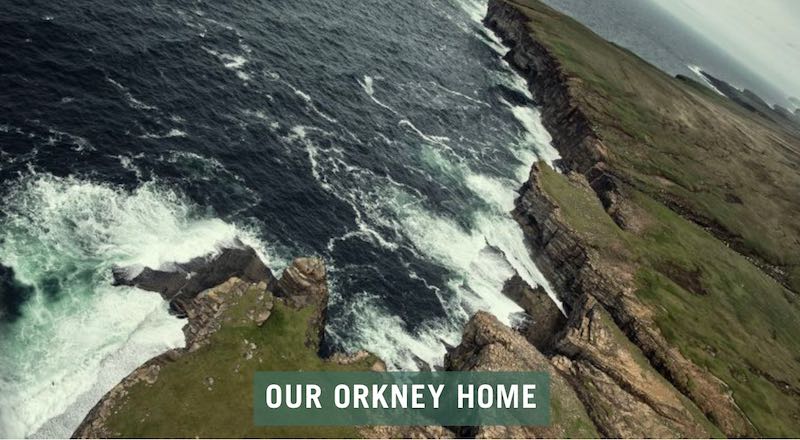
Picture Credits: www.highlandparkwhisky.com
Historically, a succession of Viking Earls ruled Orkney from 800AD to 1468. The group of 70 islands swept into the embrace of the Vikings in the early 9th century and remained so until 1468. King Christian I of Norway and Denmark gifted the islands to Scotland as part of Princess Margaret’s dowry for her marriage to James III, King of Scotland in 1468. While it ended the Viking’s rule over Orkney, the roots of the Vikings continue to influence the people till today. The Vikings who had settled on the islands become part of the Orcadians. The descendants of the Vikings are proud of their heritage, and live to bring glory and honour to their Viking roots.
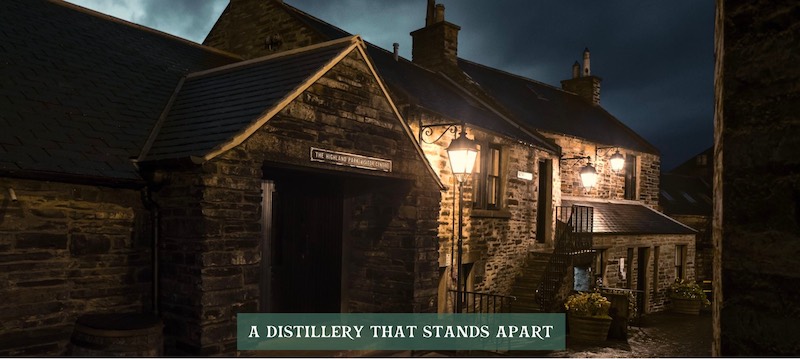
Picture Credits: www.highlandparkwhisky.com
In official records, a priest by the name of Magnus Eunson first distilled whisky on the site of Highland Park Distillery in the 1790s. He was a respectable member of the Orcadian society as well as a priest. He ran an illicit whisky trader at night and legends had it that he hid the whisky under the pulpit in his church. When excise men eventually caught up with him in 1798, charges against him were dropped mysteriously after a short time. Eunson escaped justice.
David Robertson officially founded Highland Park Distillery in 1798. He bought the High Park estate and built Highland Park Distillery. After running the distillery for a few years, he sold it to a syndicate in 1816. Interestingly, the syndicate included Eunson’s arresting officer, John Robertson and another former exciseman, Robert Pringle. The syndicate built up the distillery in 1818 and the current premises dated back to those eras.
William Stuart (who owns Miltonduff) bought Highland Park Distillery in the 1870s. It finally stabilised under his care and in 1885, James Grant (previously the manager of Glenlivet) joined Stuart as his business partner. Grant took full control of the distillery in 1895 who proceeded to expand the distillery and built up a great relationship with Robertson & Baxter (R&B).
In 1937, Highland Distillers (who had shares in R&B) took over Highland Park Distillery. Highland Distillers was the owners until the turn of the century, where they became the object of take-over. Edrington Group acquired Highland Distillers and Highland Park was taken into the folds of the Edrington Group. Since then, Edrington Group makes efforts to uphold Highland Park Distillery as a distinctive whisky maker. Today, Highland Park is the only Island distillery in the Edrington Group profile.

Picture Credits: www.highlandparkwhisky.com
Highland Park builds its whisky-making process on 5 keystones of production. They are proud of their traditions because no other distilleries use all five keystones.
Highland Park recognises the importance of peat in their whisky-making process. They obtained their peat from Hobbister Moor, located 7 miles from the distillery. Hobbister Moor has no trees, as Orkney does not have a conducive environment. As a result, the 9,000 years old peat used by Highland Park is rich in heather.
Hand-turning the malt by hand is a labour intensive method that many distilleries no longer employ. At Highland Park, they take pride to hand turn their malt because they believe in the traditional process when producing the distinctive aromatic smokiness of their whiskies. Highland Park turns their barley by hand every 8 hours, 7 days a week. The turning maintains a constant airflow and the right amount of moisture to fully absorb the intense smoke from the peat.
Highland Park is obsessed with their casks. The staves are cut from American and European oaks before shipping to Jerez in Southern Spain. These staves are made into casks and filled with Oloroso sherry. After a minimum of 2 years maturation, these casks are emptied and shipped back to Orkney. Highland Park uses these casks to fill their whiskies for maturation.
Highland Park is in a perfect location for whisky maturation. Orkney has a temperate temperature, reaching highs of 16°C in summer and lows of around 2°C in winter. Therefore, the maturation of their whiskies takes place in a long, cool and evenly paced environment.
Cask harmonisation is crucial in creating a balanced whisky. Highland Park’s Master Whisky Maker, Gordon Motion, makes sure that every release of Highland Park has the chance to rest in their vatting tun for at least a month before bottling. The time allows the newly married spirit to harmonise into a balanced whisky.
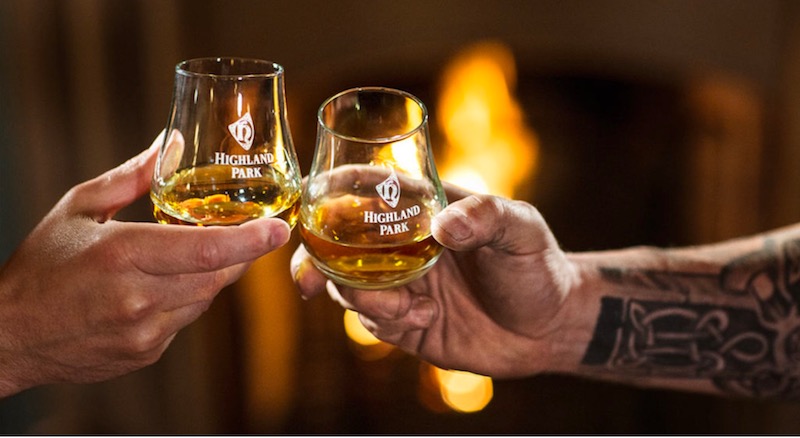
Picture Credit: www.highlandparkwhisky.com
Highland Park has a wide range of whiskies to suit every palate. Below is a list of their current expressions that are still available from the distillery.
10 Years Old – Viking Scars (New Packaging)
12 Years Old – Viking Honour (New Packaging)
18 Years Old – Viking Pride (New Packaging)
25 Years Old
30 Years Old
40 Years Old
Magnus
Dragon Legend
Valkyrie
Rebus30 10 Year Old
Svein
Einar
Harald
Sigurd
Ragnvald
Thorfinn
King Christian 1
Ice Edition 17 Year Old
Fire Edition 15 Year Old
Highland Park continues to be the driving force in Orkney as they commit to keep the Viking’s proud heritage. In the regular business sense, Highland Park is also a forerunner as Edrington Group focuses on making it more famous.
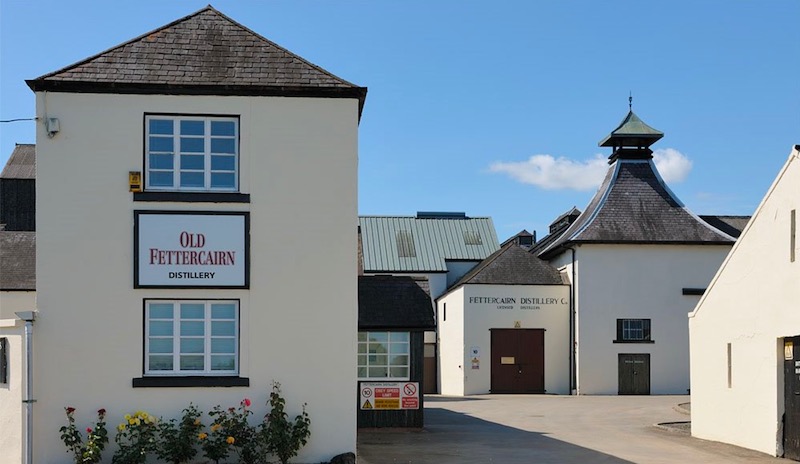
The Fettercairn Distillery (Picture Credits: www.panoramio.com)
Fettercairn distillery is situated in the Grampian foothills in the Howe of Mearns. Fettercairn means “the foot of the mountain” in Gaelic and reflects the ideal location for a whisky distillery. Natural ingredients are aplenty for the distillery – ice-clear Grampian mountain spring water and barley growing from the fertile soil surrounding the distillery allows this distillery to create stunning whiskies from its stills and barrels.
The history of Fettercairn is as complex as most of the distilleries found in the region. Alexander Ramsay, the owner of the Fasque estate, founded Fettercairn in 1825 by converting a corn mill into the distillery. He lost his wealth in a few short years and sold everything to Sir John Gladstone. His son was the four-time British Prime Minister William Ewart Gladstone. The distillery remained with the Gladstone family until 1923 and was mainly run by tenants. Thereafter, the distillery was almost mothballed by new owners Ross & Coulter (1923-1927) and James Mann (1927-1939) before it was sold to Associated Scottish Distillers (ASD), the Scotch arm of National Distillers of America in 1939.
ASD closed in 1954 and the distillery was sold to a private owner – Mr Tom Scott Sutherland. Finally, in 1971, it was bought by Tomintoul-Glenlivet and both distilleries joined the Whyte & Mackay umbrella in 1973. It remains with the company since.
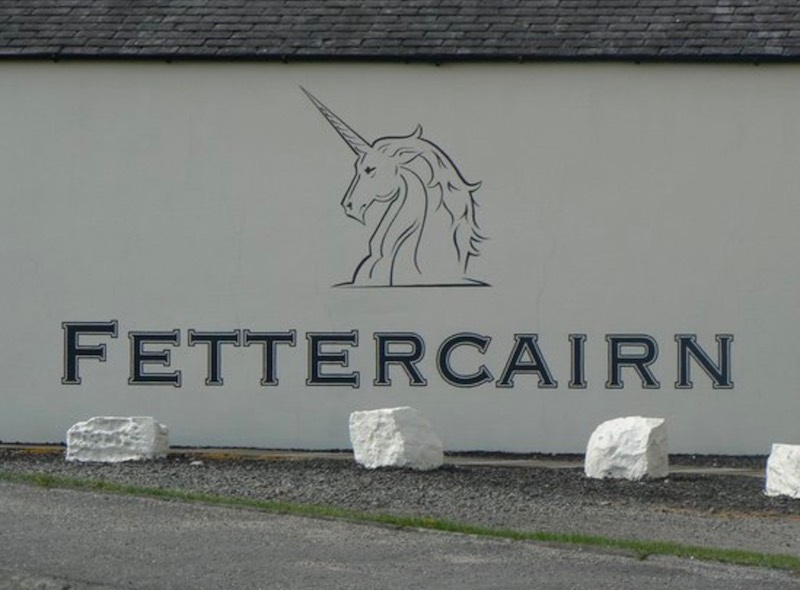
The emblems of Fettercairn (Picture Credits: www.tripadvisor.com)
Some emblems of Scotch whisky distilleries have a history behind them, and Fettercarin’s is no exception. The unicorn in the Fettercairn logo is part of Alexander Ramsay’s clan crest. The unicorn represents purity and strength and is also a symbol of Scotland since the reign of King Robert III.
The huge, red sandstone archway that stands at the entrance to Fettercairn is another symbol. It was built to commemorate the visit of Queen Victoria and Prince Albert in 1861.
Fettercairn has an interesting whisky range. It mainly contributes to Whyte & Mackey’s blends but is also bottled as a single malt. The Fettercairn label gains some popularity since 2009 when more efforts are put into single malt bottling. Currently, the Fettercairn Fasque and the Fettercairn Fior are available as official bottlings.
The distillery also has older bottles such as the Fettercairn 875 which was produced in the 1970s for the Italian market. Such bottles are rare and hard to come by in present day.
Fettercairn continues to be one of the many distilleries that contribute most of its whisky into blends. While we believe that the fate of the distillery may continue as such, there is a chance that more of its whiskies may make its way into single malt bottling in the future.
11311 Harry Hines Blvd
Dallas, TX, United States
(555) 389 976
dallas@enfold-restaurant.com
